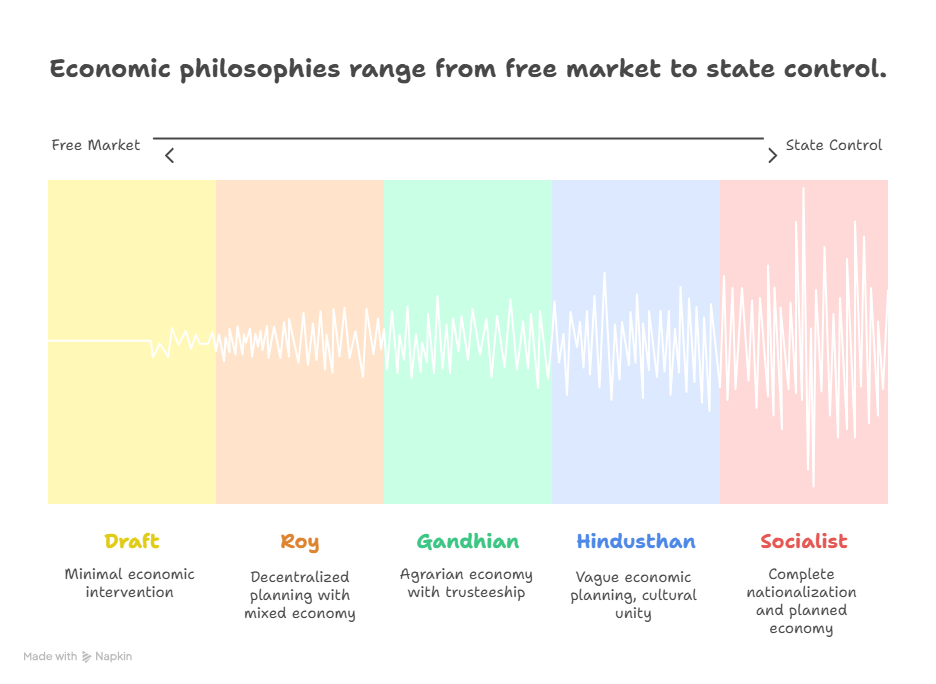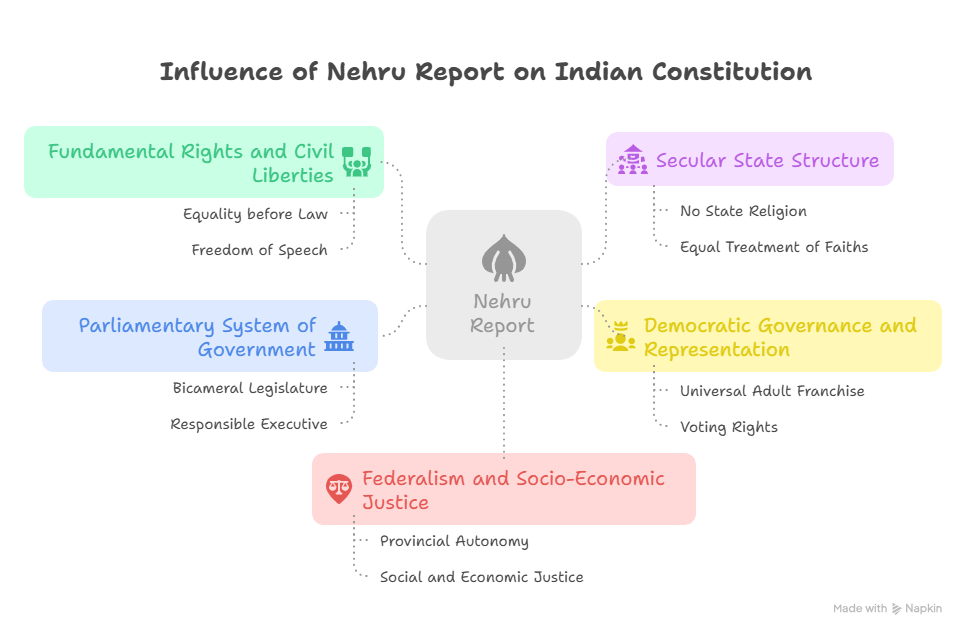Different Constitutional Drafts That Powerfully Shaped India’s Democratic Future
Different Constitutional Drafts Behind India’s Extraordinary Constitutional Legacy
Context: Amid current debates over revisiting the Constitution—sparked by recent remarks from the ex- Vice-President and the RSS’s call for a review—it is worth recalling that India’s path to becoming a republic was never singular. Between 1895 and 1948, multiple constitutional visions shaped the national discourse, reflecting a rich contest of ideas on sovereignty, governance, and justice long before the 1950 Constitution was adopted.
What Were the Different Constitutional Drafts Before 1950?
Between 1895 and 1948, at least five significant constitutional drafts were proposed, each offering a unique vision of India’s future. These were:
- The Constitution of India Bill, 1895 – Often attributed to early nationalists like Bal Gangadhar Tilak. The draft emerged during a period of British repression and rising nationalist sentiment, as early Indian leaders began articulating demands for self-governance within the colonial framework.
- M.N. Roy’s Draft Constitution (1944) – Based on Radical Humanism. Framed in the aftermath of the Quit India Movement and amid the global crisis of World War II, Roy’s proposal reflected a push for radical democratic reforms in a rapidly changing world order.
- Constitution of the Hindustan Free State Act (1944) – Linked to the Hindu Mahasabha. Proposed in the same turbulent year, this draft arose from the ideological churn following the Quit India Movement, with Hindu nationalists offering their vision amid uncertainty about India’s future.
- The Gandhian Constitution for Free India (1946) – Drafted by Shriman Narayan Agarwal, endorsed by Mahatma Gandhi. Drafted during the Cabinet Mission Plan negotiations and the formation of the Constituent Assembly, this proposal reflected Gandhi’s alternative vision for India rooted in village-based self-rule.
- Socialist Party Draft Constitution (1948) – Proposed by Jayaprakash Narayan and the Socialist Party. Emerging post-independence, this draft critiqued the ongoing Constitution-making process as elite-driven and offered a socialist alternative centred on equity and grassroots empowerment.
These drafts reflected liberalism, decentralism, cultural nationalism, Gandhian ethics, and Marxist socialism, respectively.
Why Were These Drafts Created?
- These drafts were attempts by various ideological camps to imagine a sovereign Indian state that aligned with their political, social, and economic philosophies. They sought:
- Political self-determination from colonial rule
- A constitutional basis for governance post-independence
- Ideological representation in the future state (liberalism, socialism, decentralism, etc.)
- Article 1 of the Indian Constitution adopted in 1950 defines India as a “Union of States.” But long before that, these drafts helped in conceptualising the republic through lenses of liberal rights, federalism, socialism, or cultural nationalism.

Where Did These Drafts Converge and Diverge?
-
Governance Structure
- Unitary vs. Federal: While Hindustan Free State Act proposed a culturally unified, centralised structure, Roy’s and the 1895 Bill proposed federal structures; Roy’s being linguistically organised.
- Decentralised Models: Roy’s participatory federalism and Gandhi’s village republics (Gram Swaraj) both resisted central bureaucracy, but differed in emphasis (political education vs. moral ethics).
-
Civil Liberties and Rights
- Detailed Rights: 1895 and Roy’s drafts had elaborate Bills of Rights.
- Economic Rights Focus: Socialist draft prioritised socio-economic rights over political freedoms.
- Example: Roy’s enforceable socio-economic rights predated India’s Fundamental Rights–Directive Principles dichotomy (Part III and Part IV of the Constitution).
- Moral Duties over Rights: Gandhian draft stressed duties, not enforceable rights.
- Economic Vision: The Economic Survey of India (2023–24) notes the gradual rise of economic decentralisation through instruments like the Finance Commission and Panchayati Raj, echoing some of Roy’s and Gandhi’s themes.

How Did These Drafts Influence the Final Constitution?
- Roy’s Draft: Popular sovereignty, participatory democracy, enforceable socio-economic rights.
- Gandhian Constitution: Foundation for Panchayati Raj (Article 40 of the Directive Principles).
- Socialist Draft: Echoes in Directive Principles (e.g., Article 39 – distribution of resources).
- 1895 Bill: Liberal rights, legalistic structure, separation of powers (Article 14–22 of Part III).
- Hindusthan Free State: Although culturally majoritarian, it affirmed religious freedoms — mirrored later in Articles 25–28.
Case Study: The Balwant Rai Mehta Committee (1957), which laid the foundation of the Panchayati Raj, was a direct extension of the Gandhian decentralist vision.2nd ARC Report on Local Governance (2007) acknowledged that true democracy in India requires grassroots planning — aligning with both Roy’s and Gandhi’s drafts.


